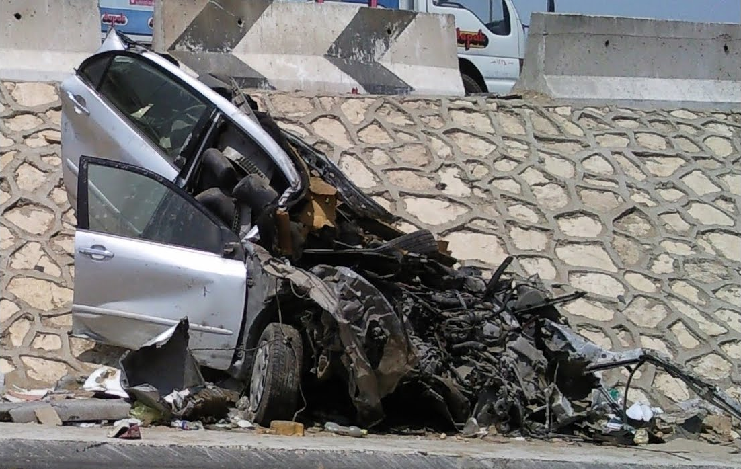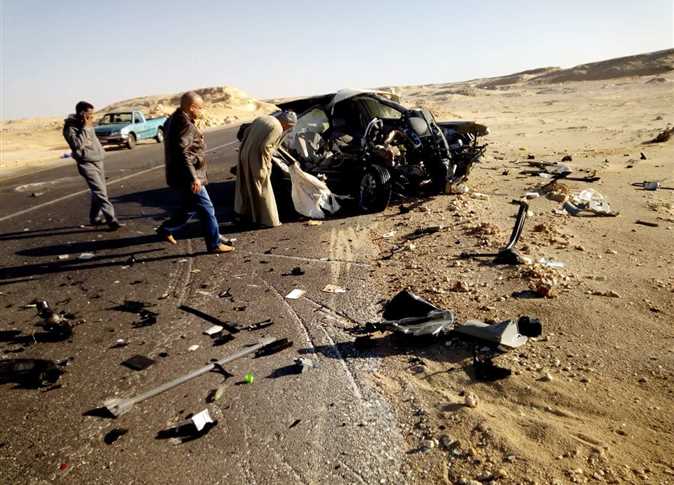This year’s Eid El Adha break is going to be a mammoth of a holiday. The occasion itself lasts for four days on the Islamic calendar.
2019’s Eid El Adha is set to take place from Sunday the 11th of August to Wednesday the 14th of August. Not a single day of the four-day public holiday is going to fall on a weekend. Many of us have very likely taken that solitary Thursday on the 15th of August off so that we can enjoy, beginning from yesterday, Friday the 9th of August, a nine day-long break from work and school.
This also means many of us have probably planned to leave where we’re based to enjoy this satisfyingly long late-summer holiday elsewhere, be it going back to our hometowns or a beachside getaway.
Many of you reading this will most likely be opting to take your car or ride along in a friend’s or relative’s car to get to your holiday destination, meaning you’ll probably be spending a good part of your long trip on at least one of Egypt’s high-speed travel roads.
Statistics on the number of road-related accidents, injuries, and deaths that specifically take place during Egypt’s public holidays, the two Eids in particular, either don’t exist or aren’t available to the public. However, it would be safe to assume they spike during these periods due to the higher number of travellers and vehicles that take to the country’s roads.
We all know how precarious travelling at these times of the year are. Our loved ones always tell us to take care on the roads and they endlessly worry until they’re sure we’ve reached our destinations and well and truly parked our cars. And for very good reason. We have all at the very least either been involved in an accident, know someone who’s been in an accident, or heard of someone who’s been in an accident. Worst of all, you may have lost someone close to you in an accident.
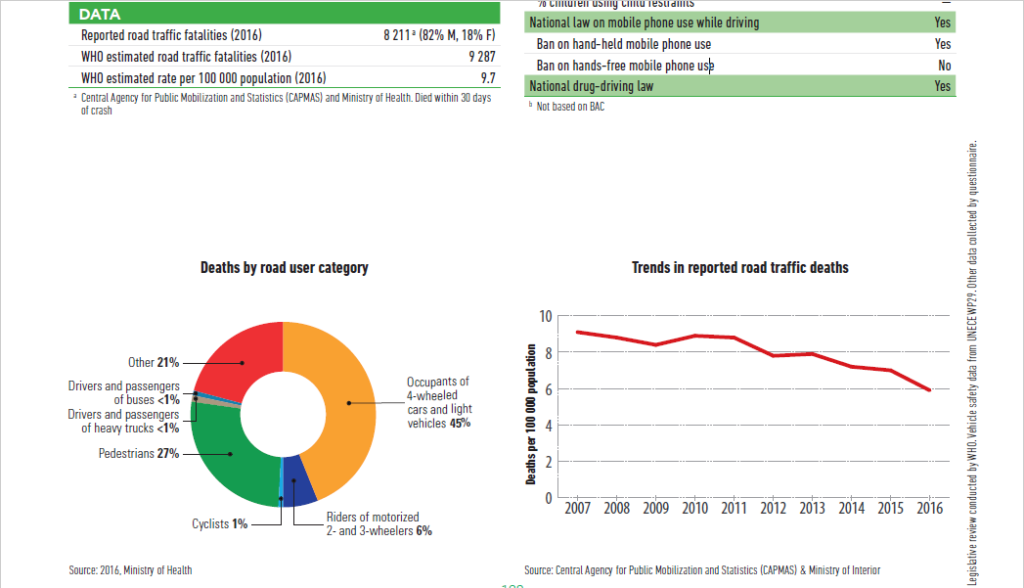
According to the World Health Organisation’s (WHO) Global Status Report on Road Safety 2018, there were an estimated 9,287 road-related deaths in Egypt in 2016, a figure which is highly likely to be an underestimation. Nevertheless, 45 percent of them were occupants of four-wheeled cars and light vehicles, making up the largest portion of those deaths. Just recently, Egypt’s Central Agency for Public Mobilisation and Statistics (CAPMAS) reported that the total cost of road accidents to the country’s economy reached EGP 28.9bn in 2017.
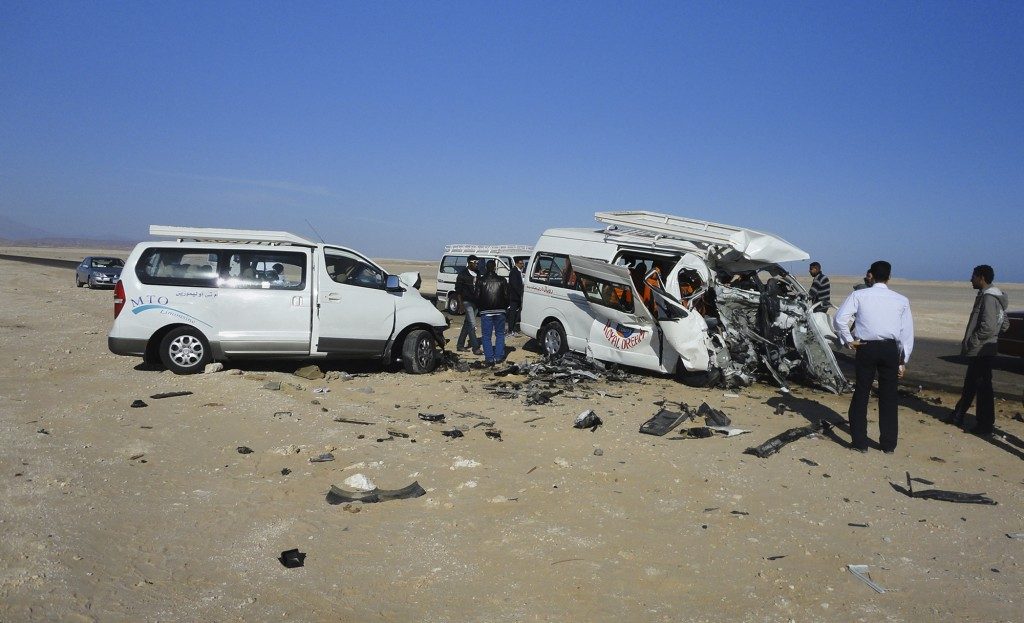
The NADA Foundation for Safer Egyptian Roads is a local non-government organisation (NGO) that focuses on raising awareness over the country’s road safety situation and undertakes initiatives to improve it by reaching out to both authorities and drivers over implementing better safety laws and policies and teaching safe driving skills. In 2015, at a road safety conference organised by them entitled “We’re All Responsible”, which was also sponsored by Egypt’s transport ministry, they reported that road-related accidents were the leading cause of death for Egyptians aged 15 to 19, and the second highest cause of death for children aged 5 to 14.
A representative from the NGO who spoke to me claimed that according to their findings, there are on average 50,000 road-related injuries per year and an average of 25 deaths per day.
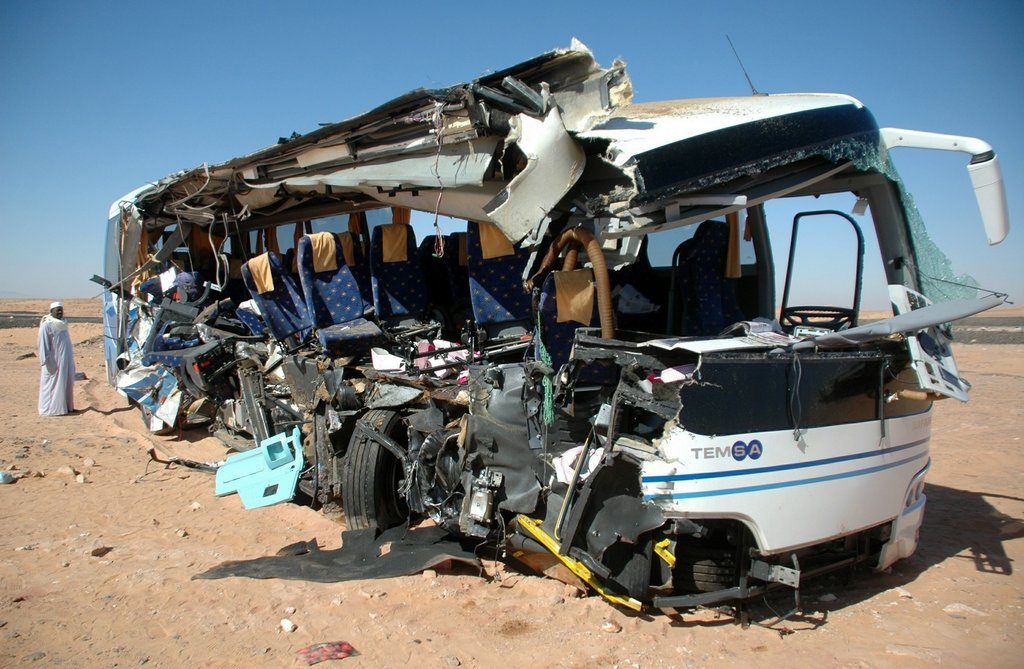
While there are many structural reasons for these tragic statistics, we can’t deny that they can also be put down to personal human error. Many of us consistently break traffic laws, drive aggressively and discourteously, and look at our phones while at the wheel among many other unsafe practices and habits. Worst of all though, we speed, and speeding is probably the biggest killer. The WHO’s “World report on road traffic injury prevention” of 2004 stated that the “speed of motor vehicles is at the core of the road injury problem…Crash risk increases as speed increases.”
I took the time to write this article as a plea to you, the reader, to take extra care in your travels this Eid. Of course, I’d love for you to take what you’re about to read and apply it to all your future car journeys.
I decided to take a particular approach to help you become more mindful of the way you drive and how it will affect your journey by calculating the exact lengths of time it will take for you to get from your starting point to your holiday destination based on your speed.
Since it’s the summer, many affluent Egyptians (if not already there) will be flocking to the country’s north coast that lines the Mediterranean Sea, a region simply known colloquially as “Sahel”. That’s one reason why I’ve decided to select Sahel as a reference point. Another very important reason are the roads to Sahel. Over the years, the Cairo-Alexandria Desert Road and the Alamein Road have been redeveloped and expanded. Since then, many drivers taking to these roads have been driving at astronomical speeds, especially the crowd who own vehicles that are very capable of reaching them (perhaps you’re one of them). It’s quite common to find many of them racing each other at speeds exceeding 180 km/h. These travel roads have become notorious for horrific accidents as a result.
So to demonstrate, let’s take Tahrir Square in Cairo as our reference starting point, with Almaza Bay, regarded as the easternmost part of Sahel, 412 kilometres from Tahrir Square using the shortest route, as our reference destination point.
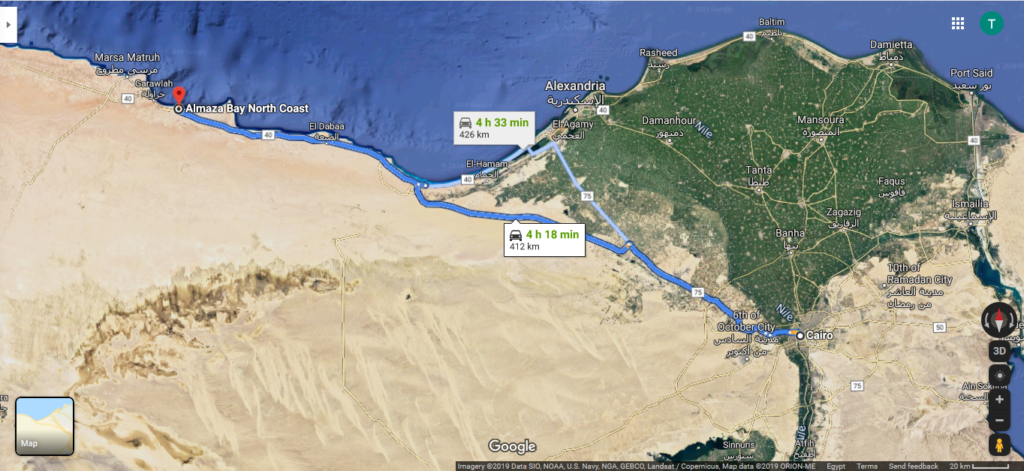
The following numbers below are a calculation of the lengths of time it would take to drive from Tahrir Square to Almaza Bay at different speeds calculated at kilometres per hour (km/h). These times are only accurate assuming that from the start of your car journey in Tahrir Square, you are immediately travelling at those speeds and maintaining them non-stop with no interruptions or slowing down until reaching Almaza Bay, which we all know is impossible.
90 km/h = 4 hours 34 minutes
100 km/h = 4 hours 7 minutes
120 km/h = 3 hours 26 minutes
140 km/h = 2 hours 56 minutes
160 km/h = 2 hours 34 minutes
180 km/h = 2 hours 17 minutes
200 km/h = 2 hours 3 minutes
220 km/h = 1 hour 52 minutes
So compared to driving at the slowest speed of 90 km/h, driving at the fastest speed of 220 km/h would only save you two hours and 42 minutes. 2 hours, 42 minutes. 2:42. Please read that figure carefully and keep in mind that that is the maximum time you would save if you drive off from Tahrir Square at 220 km/h instantly with absolutely no stopping or slowing down at any point until arriving at the furthest point in Sahel at Almaza Bay, 412 kilometres away. Realistically, the best-case scenario is that you would be saving a mere two hours.
Now apply this to any journey you’ll be taking regardless of where you’re starting and where you’re ending, and you’ll realise that no matter how fast you’re driving, the time you “think” you’ll be saving is negligible. What’s an added two hours to your journey? What exactly are you going to be missing out on? Is that a significant chunk of time taken out of your holiday? Will it be the difference between a good holiday and a bad one?
Speaking of bad holidays, the most important question I’ll ask of you is, is it worth the risk of accident and injury? Is the risk of losing your own life, the lives of those riding with you, and the lives of those around you on the roads, worth those two hours? Is missing the first two hours of that beach party more painful and miserable than injury and death?
These are very important questions for you to ponder before setting off on your car journey. Before deciding to drive at such high speeds because you’re so eager to get your holiday officially started. It doesn’t matter how careful or safe or experienced a driver you think you are. The faster you drive, the less control you have over your vehicle, and the more devastating and deadly any collision or accident will be. No matter what, you’re always going to be making a massive gamble, and if you lose, the price can be devastating. There’s simply no point.


